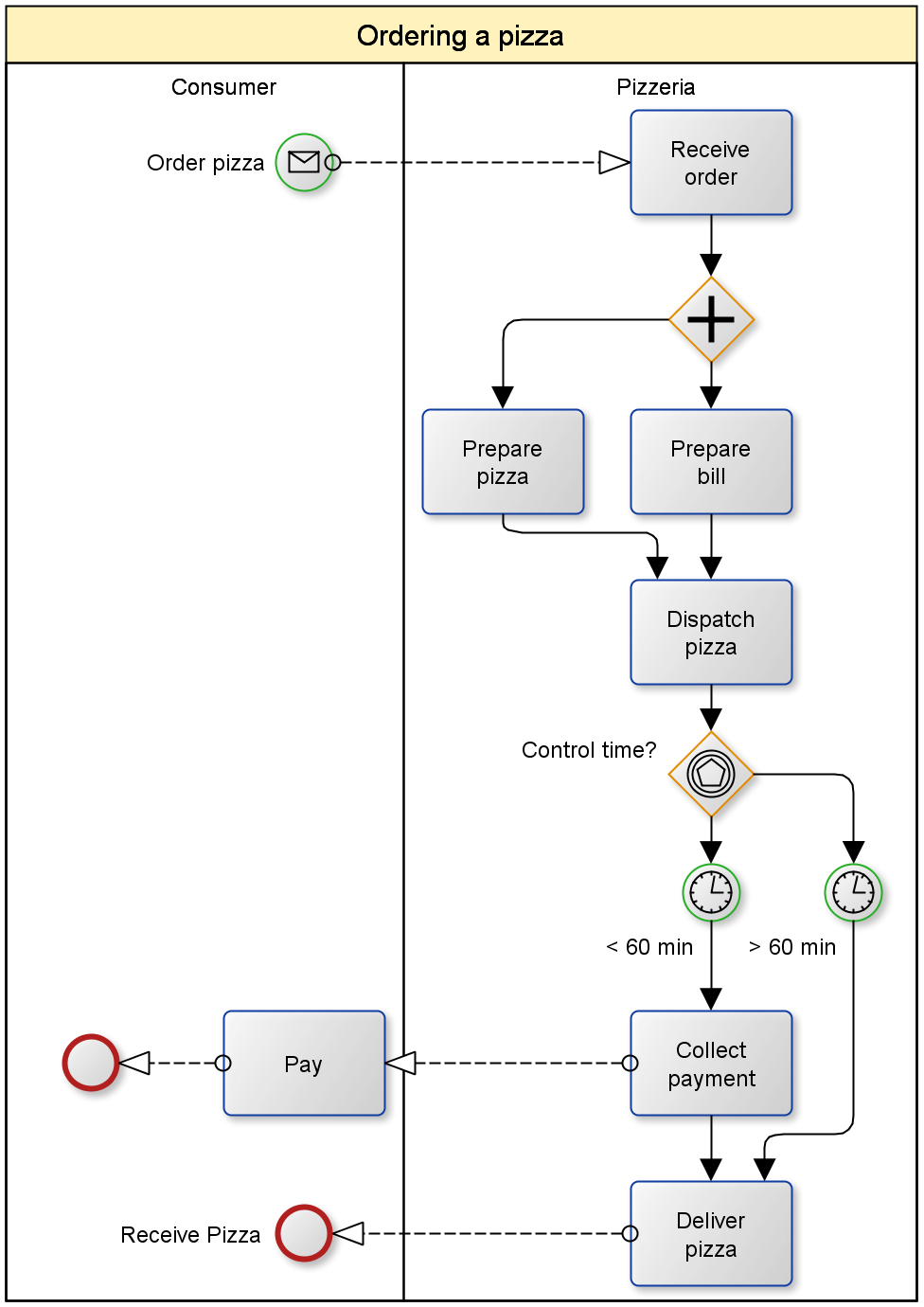

In the menu bar, click File > Save & Publish.Click OK to close the Process Model Properties dialog.This expression adds expense item information to the display name of every process instance. In the Expression Editor dialog, enter ="Expenses Submitted: " & pv!expenseItem.On the General tab, next to Process Display Name, click Edit as Expression.In the menu bar, click File > Properties.In the Build view, click Submit Expense Report to open the process model.To make the process instance names dynamic:
BUSINESS PROCESS MODELLING TUTORIAL UPDATE
So, let's update the name to include information that's specific to each process instance. As more expense reports are submitted and other applications are introduced into this environment, it will become difficult to distinguish processes from each other if the process instance names are generic. In the PROCESS ACTIVITY list, you might have noticed that the process name is simply Submit Expense Report.
Close the monitoring view for this process instance. By default, the Process History tab is active. In this case, the flow was straightforward: it started at the Start Node and successfully continued to the End Node. The flow that your process instance followed is highlighted in blue. The monitoring view of the process instance displays in the Appian Process Modeler. You should see your process instance with the name Submit Expense Report in the list.Ĭlick your process instance. Click PROCESS ACTIVITY to view the list of processes. In the Appian Tutorial application, go to the Monitor view in the left navigation pane. 
In the actions list, click Submit Expense Report.If your environment contains multiple applications, select the Appian Tutorial application from the left navigation panel.In the Build view, go to the navigation menu, and click Tempo.
 Configures the AT_expenseReportForm interface as the process start form. Creates any needed process variables for the process model. Configures the general properties for the process model, including the process model name and description. This step essentially does the following: You have just created a process model for submitting expense reports and made it available in Tempo as an action. You can leave the modeler open, because we'll be returning to it in a moment. The Appian Process Modeler opens automatically and displays the Submit Expense Report process. For AT Administrators, leave the Permission Level as Administrator. For AT Users, set the Permission Level to Initiator. In the Review Process Model Security dialog, update the default security as follows:. If that folder doesn't exist yet, create it: By default, the current application is selected. This action will display the Save Interface As form.Ĭonfigure or verify the following properties: Property In the settings menu, select Save as…. Click AT_expenseReportForm to open the interface. In the Appian Tutorial application, go to the Build view. Let's start by using the AT_expenseReportForm interface to create an application action. Contact your system administrator if you are unsure if you belong to this system group. Make sure you're a member of the Process Model Creators system group. Before you beginĬomplete the Interface Tutorial first, so that you have both the Appian Tutorial application and the AT_expenseReportForm interface needed to complete this tutorial. For the last step of setting up your process model, we'll add an approval step for a user to approve the expense report submitted. Then, we'll add a process flow that lets the user cancel their request. The form for the expense report will contain a few inputs that are saved into process variables so we can use them later. We'll create an action so that users can submit their own expense reports. The process model we're creating in this tutorial is for a simple expense management application. This tutorial will help you create a process model that end users can start as an application action.
Configures the AT_expenseReportForm interface as the process start form. Creates any needed process variables for the process model. Configures the general properties for the process model, including the process model name and description. This step essentially does the following: You have just created a process model for submitting expense reports and made it available in Tempo as an action. You can leave the modeler open, because we'll be returning to it in a moment. The Appian Process Modeler opens automatically and displays the Submit Expense Report process. For AT Administrators, leave the Permission Level as Administrator. For AT Users, set the Permission Level to Initiator. In the Review Process Model Security dialog, update the default security as follows:. If that folder doesn't exist yet, create it: By default, the current application is selected. This action will display the Save Interface As form.Ĭonfigure or verify the following properties: Property In the settings menu, select Save as…. Click AT_expenseReportForm to open the interface. In the Appian Tutorial application, go to the Build view. Let's start by using the AT_expenseReportForm interface to create an application action. Contact your system administrator if you are unsure if you belong to this system group. Make sure you're a member of the Process Model Creators system group. Before you beginĬomplete the Interface Tutorial first, so that you have both the Appian Tutorial application and the AT_expenseReportForm interface needed to complete this tutorial. For the last step of setting up your process model, we'll add an approval step for a user to approve the expense report submitted. Then, we'll add a process flow that lets the user cancel their request. The form for the expense report will contain a few inputs that are saved into process variables so we can use them later. We'll create an action so that users can submit their own expense reports. The process model we're creating in this tutorial is for a simple expense management application. This tutorial will help you create a process model that end users can start as an application action.







 0 kommentar(er)
0 kommentar(er)
